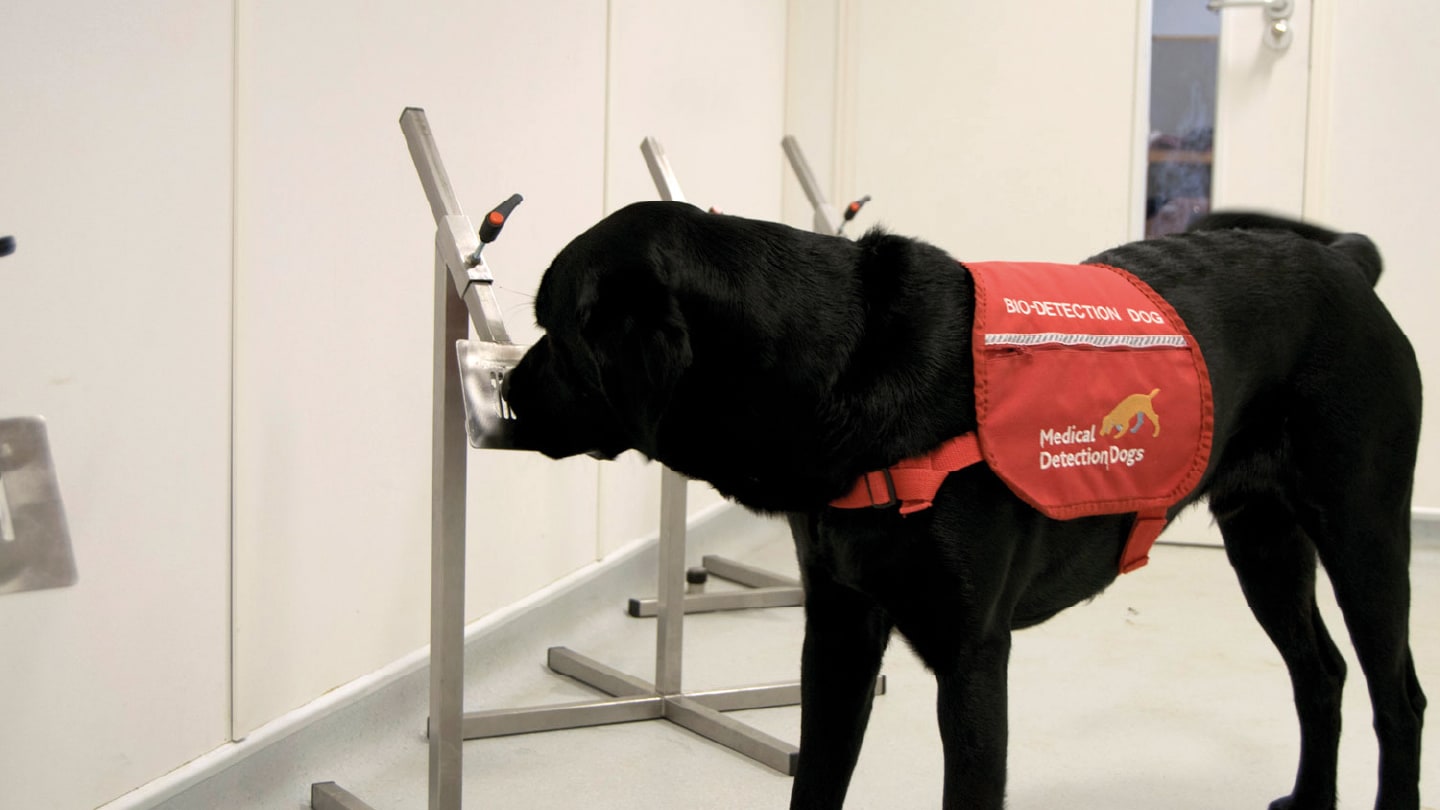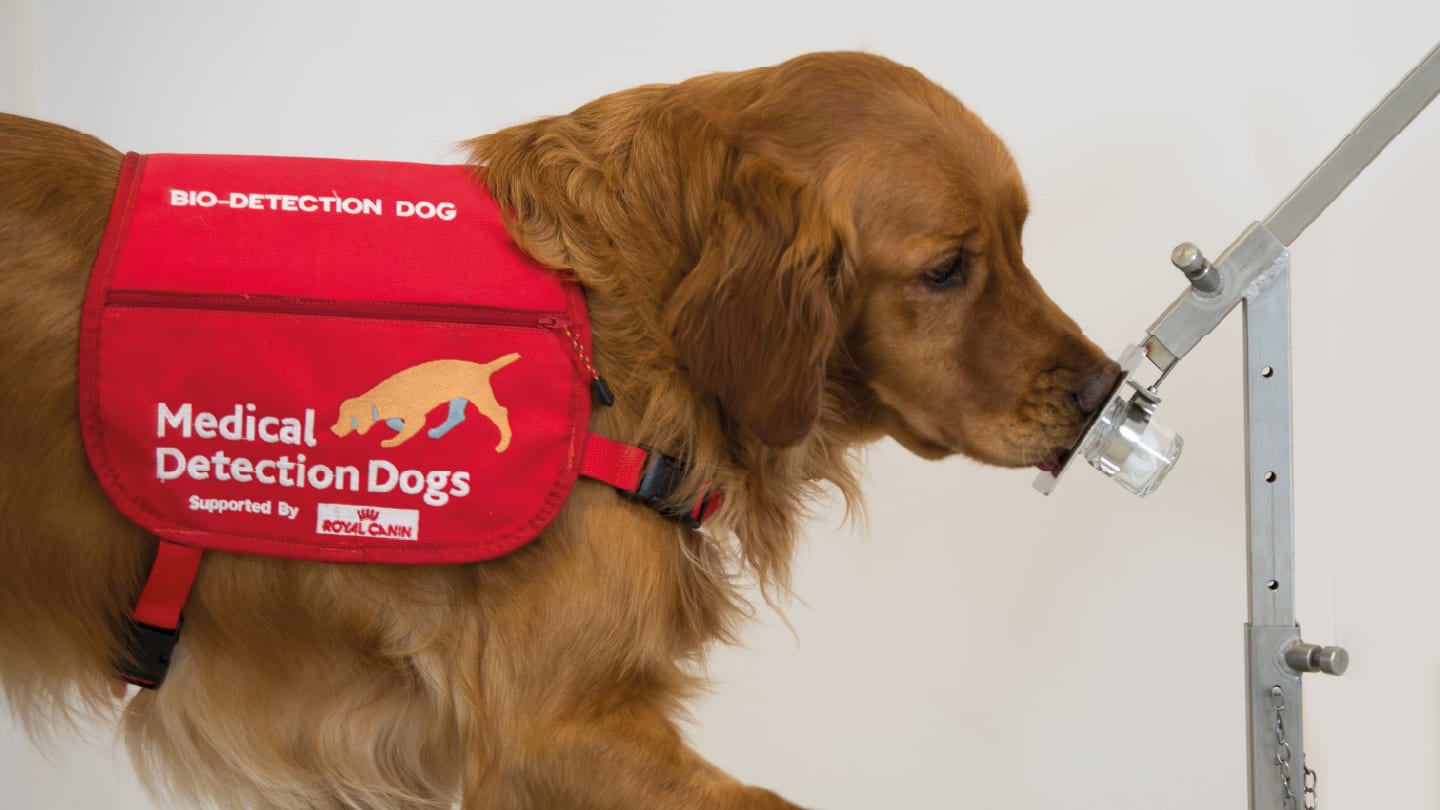Two trained dogs accurately identified drug-naïve Parkinson’s disease in sebum samples with up to 80 percent sensitivity and 98 percent specificity, according to a recent study.
In a diagnostic accuracy study published in the Journal of Parkinson’s Disease, two trained dogs were evaluated for their ability to distinguish between sebum samples collected from patients with Parkinson’s disease (PD) and control patients. The study, led by scientists at the UK Bristol Veterinary School aimed to examine whether volatile organic compounds in sebum could be detected reliably as potential biomarkers of PD. Researchers trained the dogs using 205 sebum swabs, including samples from patients diagnosed with PD and matched controls. After a training period of 38 to 53 weeks, the dogs were assessed in a double-blind, randomized controlled trial involving 100 new samples: 40 from drug-naïve patients with PD and 60 from control patients.

Samples were presented in a four-sample line configuration. Each line included one or no PD-positive sample. The dogs’ responses were categorized based on specific behavioral indicators, and only direct indications were counted as positive responses for analysis. Blinding was maintained for both handlers and experimenters throughout the testing process, and calibration trials were conducted to ensure consistency.
Dog 1 demonstrated a sensitivity of 70 percent and specificity of 90 percent, while Dog 2 achieved 80 percent sensitivity and 98 percent specificity. Statistical analysis using Fisher’s exact test showed significant discrimination between PD and control samples by both dogs (p<0.0001). Agreement between the dogs on positive samples exceeded chance expectation. For control samples, the level of agreement aligned with chance.

The study design differed from previous research by including a broader control population and avoiding pre-test exposure to positive samples. The researchers did not match control samples as precisely as in earlier studies and did not use a match-to-sample protocol. The specificity levels obtained in this study were comparable to those reported in other research, while sensitivity varied. The differences in performance between the two dogs may be attributed to individual variability or training-related factors.
These findings are consistent with prior reports that trained dogs can detect PD-related changes in sebum. The study used samples from drug-naïve patients shortly after diagnosis, and future research may further evaluate the potential of olfactory detection methods in identifying early or prodromal PD. The researchers noted that dogs could assist in evaluating biomarkers but did not propose them as diagnostic instruments.




